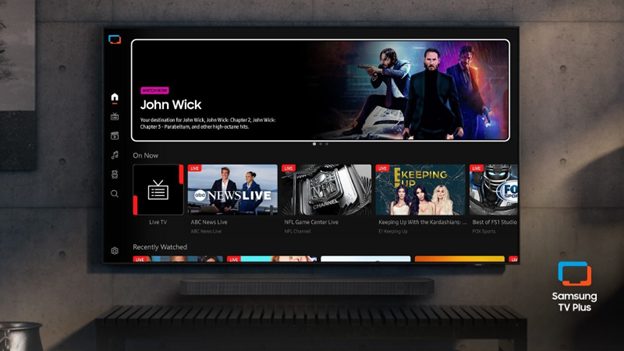Q&A — Marc Zorn, Information Security Consultant
HOLLYWOOD, CALIF.—Shortly before the start of the SMPTE 2015 Annual Technical Conference & Exhibition, TV Technology spoke with Marc Zorn about his upcoming session “Tracking Digital Content From Production through Distribution.”
TV TECHNOLOGY: Obviously illicit copying and pirating of content is much more easily accomplished today than at any time in the past; what areas of the capture/post-production/distribution ecosystem do you perceive as particularly vulnerable to piracy or other unauthorized use?
MARC ZORN: It is easy to highlight areas like screener DVDs and put lots of effort into curtailing that exposure. It should be addressed because it continues to be a known vulnerability, but it won't significantly change the piracy landscape. If there's a better quality version available on pirate sites, it will prevail over a watermarked screener, even if the screener shows up first.
A more effective starting place is to know what is being most-widely pirated and work back to find the sources. The majority of piracy still happens after release. A quick glance at piracy sites shows that most of the high-quality copies are from high-end camcorders at theaters, retail downloads, streaming media, DVD or BD rips, or some other widely accessible medium.
There are also a growing number of very high-quality copies showing up without embedded information that would help determine provenance. Luckily, the possible sources are few, and investigation can be focused. The remedy is to embed more data in the content prior to release.
TVT: "Tools" for determining the source and subsequent distribution path of illicit video duplications have been around since the introduction of video recording technology in 1956. (I'm referring to a tape dropout or other "blemish" that indelibly marks content.) "Watermarking" of content was introduced after the industry went digital and is of assistance in determining sources and distribution channels of bootlegged material, but just as with the analog videotape example mentioned can really do nothing to prevent illicit duplication of content. Other than creating a physically ultra-secure environment for the end-to-end handling of digital content (which would be difficult and extremely costly), what can be done to thwart such theft of intellectual property?
ZORN: Physical controls are necessary, but they protect the environment where content exists, and not so much the content itself. Traditional methods of securing content are proving to be less and less effective. Efforts are focused on adherence to access controls, technology standards, policies and procedures rather than a real understanding and mitigation of risk to the data itself.
Everyone involved in a project has some stake in maintaining the value of the content whether they realize it or not. There should be a constant reminder that working on content and safeguarding it are expressed in the same breath. To do that, there should be a fundamental change in the way content data is managed across the entire ecosystem.
Storage, library and digital asset systems have to become automated custodians of content data. Each digital asset should be updated at various checkpoints along the process to establish a sort of digital chain-of-custody. If you check out content to work on, data is embedded to identify you as part of the chain, and you are responsible while it is under your control.
TVT: Again, harkening back to analog days, many anti-piracy technologies such as "copy guard" encryption (the Videocypher system) and others have been developed to prevent unauthorized duplication and/or distribution, but it seems that virtually everything tried has been defeated by determined hackers. Given the nature of digital content, do you ever envision there will be such a thing as content that is truly impossible to copy and/or distribute illicitly?
ZORN: There will continue to be times when methods for copying some form of content are not yet known. Those situations have never been permanent. Yet, coding content using strong encryption may be a good method for staying ahead of the problem, even if only for a limited time. Encryption algorithms can be updated, perhaps moving the barrier just enough to remain useful.
In more practical terms, however, there is always a trade-off between security and usability. When talking about media content, especially on the consumer end, striking a balance is critical. You may be able to make something very secure, but make it too cumbersome and consumers will find a more palatable alternative.
TVT: Has the rather universal movement away from distribution of motion pictures on film to "secure" digital media slowed the production of bootleg copies? Have there been any reported cases of illicit content production/distribution since the all-digital distribution modality was adopted?
ZORN: The production of bootleg copies made directly from distribution media has been dramatically reduced. The rare copies that are still being made from distribution media are from versions without the normal security measures in place. Essentially, the measures work when they are used correctly.
TVT: Is there anything that can be done, short of implementation of physical security measures used in airports, to prevent theatre patrons from using small camcorders to create copies of motion pictures during their theatrical showing?
ZORN: Many things can be done, like installing infrared cameras or video blanking technologies, but theater owners do not want the additional expense or potential liability. More importantly, anything that negatively impacts the theatergoer's experience will not be seriously considered.
Most theater patrons are unaware that information unique to their particular theatrical showing is already being embedded in the presentation and will be transferred through to most recordings. This would be an effective deterrent, if it was well-known that there was a real chance of eventually being identified and caught.
The professional video industry's #1 source for news, trends and product and tech information. Sign up below.
